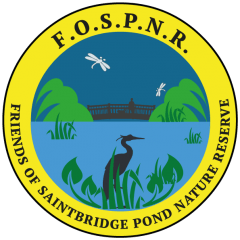
About 25 per cent of all life can be held in a cupful of soil. By September 2022, the world population exceeded 7.9 billion individuals. There are as many in that cupful of soil. These range from animals, plants, microbes, viruses, and fungi. Over billions of years, many have grown to be co-dependent with other species.



Fungal Hyphae connect Individual trees in a community who talk to each other, warning each other of natural pests and danger.
Declining Biodiversity
However, declining biodiversity can upset a balanced ecosystem, leading to fewer types of species. For example, since 2014, 14 percent of reefs have been lost, in the marine biodiversity. Declining biodiversity can also pose more direct dangers to humanity, including reduced availability of clean water, food shortages to reduced populations of fish. That in turn leads to loss of resources from forests, such as oxygen, plant & medicines. A loss of livelihood for communities depending on those natural resources, and tourism.
Less diverse and healthy crop may follow due to a decrease in pollination rates, i.e. loss of pollinator species likes bees, moths and other insects. Follow this link to find out about some unusual pollinators https://www.worldatlas.com/articles/10-unusual-plant-pollinators-from-the-animal-kingdom.html
Climate change forces species either to adapt either through shifting habitats, changing lifecycles or other development of new physical traits. Without adaptation, a species perishes.
Ocean warming and acidification, rising global temperatures, expanding deserts, worsening weather, are some main drivers behind biodiversity loss. Others factors to take into consideration are mono cropping and pesticides which reduce are the variety of crops and insects aka decreased pollination rates. Deforestation can directly lead to losses when they have no other habitat and cannot relocate.

One of the main causes in today’s society, is urbanisation and road construction, mostly through habitat loss and fragmentation. In 2000, 450,000km2, that was the amount of protected land. This is likely to increase to 1,350,000km2 by 2030. An integrated protection plan & response is needed to ensure all inhabitants are included in any planning or layout of any new development.

FOSP’s role within the Nature Reserve and our small part in the big picture.
The nature reserve is small, but we are working with our partners to increase the diversity around its functionality as a flood defend and green lung for the city. We have many supporters and will continue to promote the work that we are involved in.

Get Involved
Why not volunteer with us. The benefits are good companionship of like-minded individuals who enjoy the outdoor activities which are never dull with surprises thrown in for good measure. Catch us when we are out and about or email contact@fosp.org.uk. We will get back to you. Catch you around.




